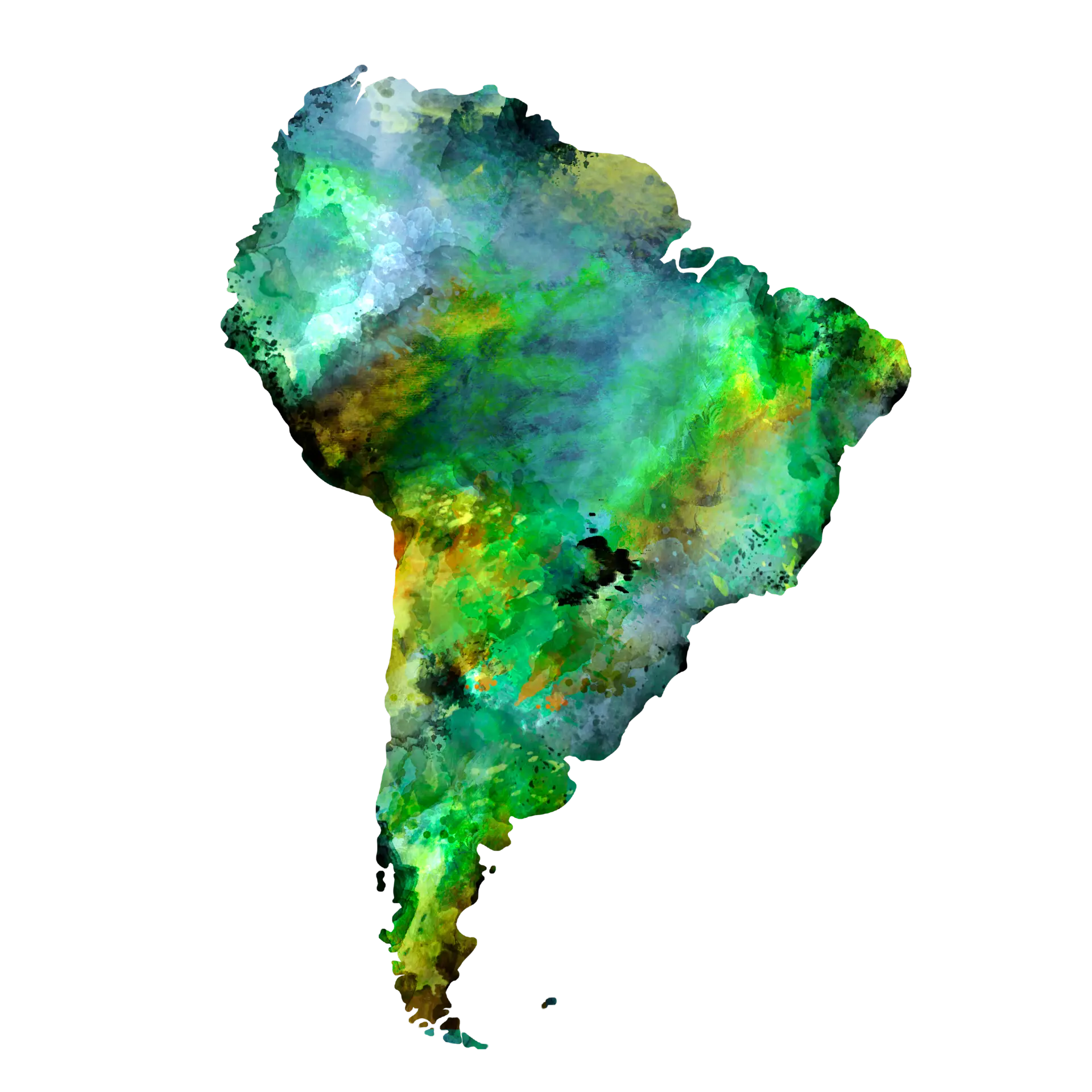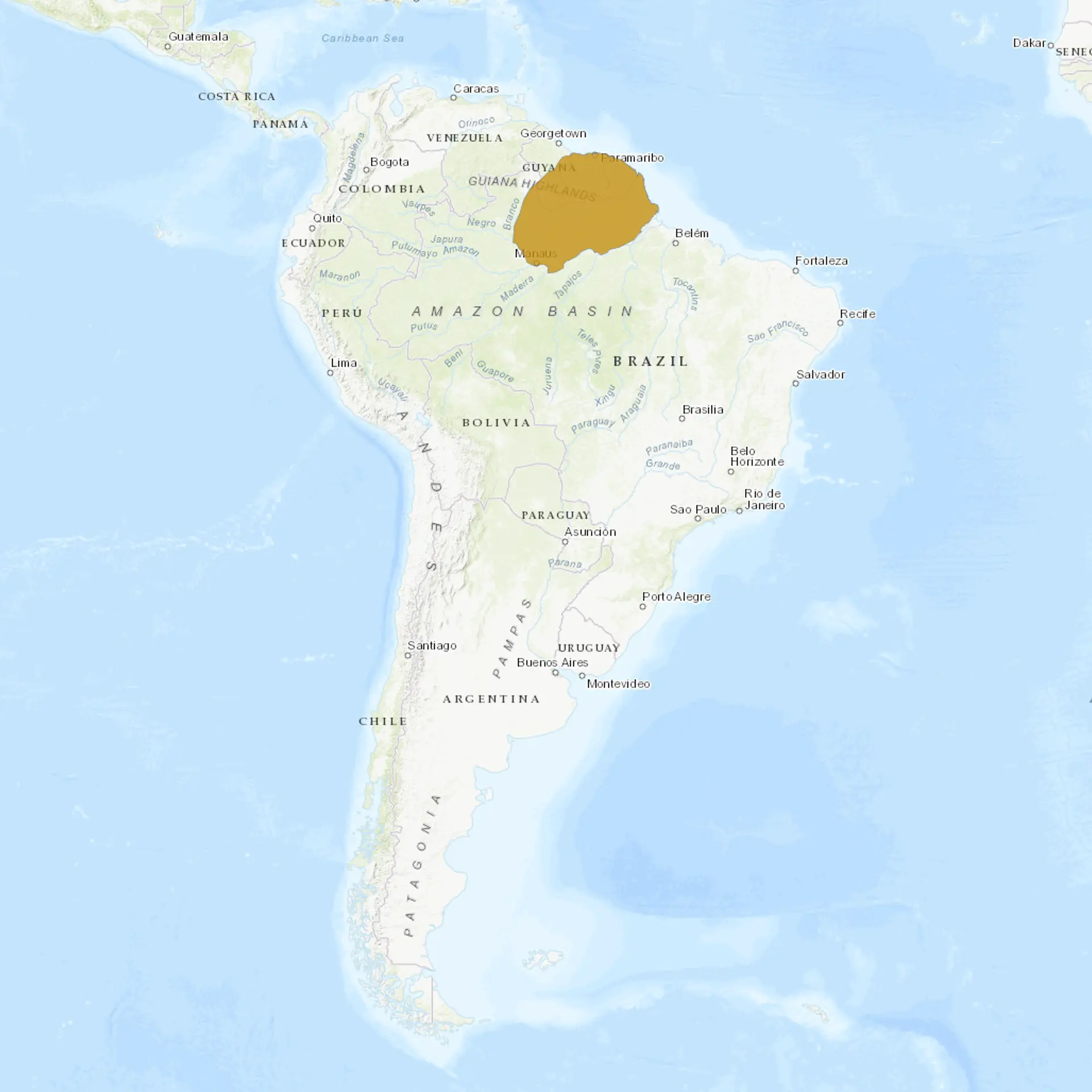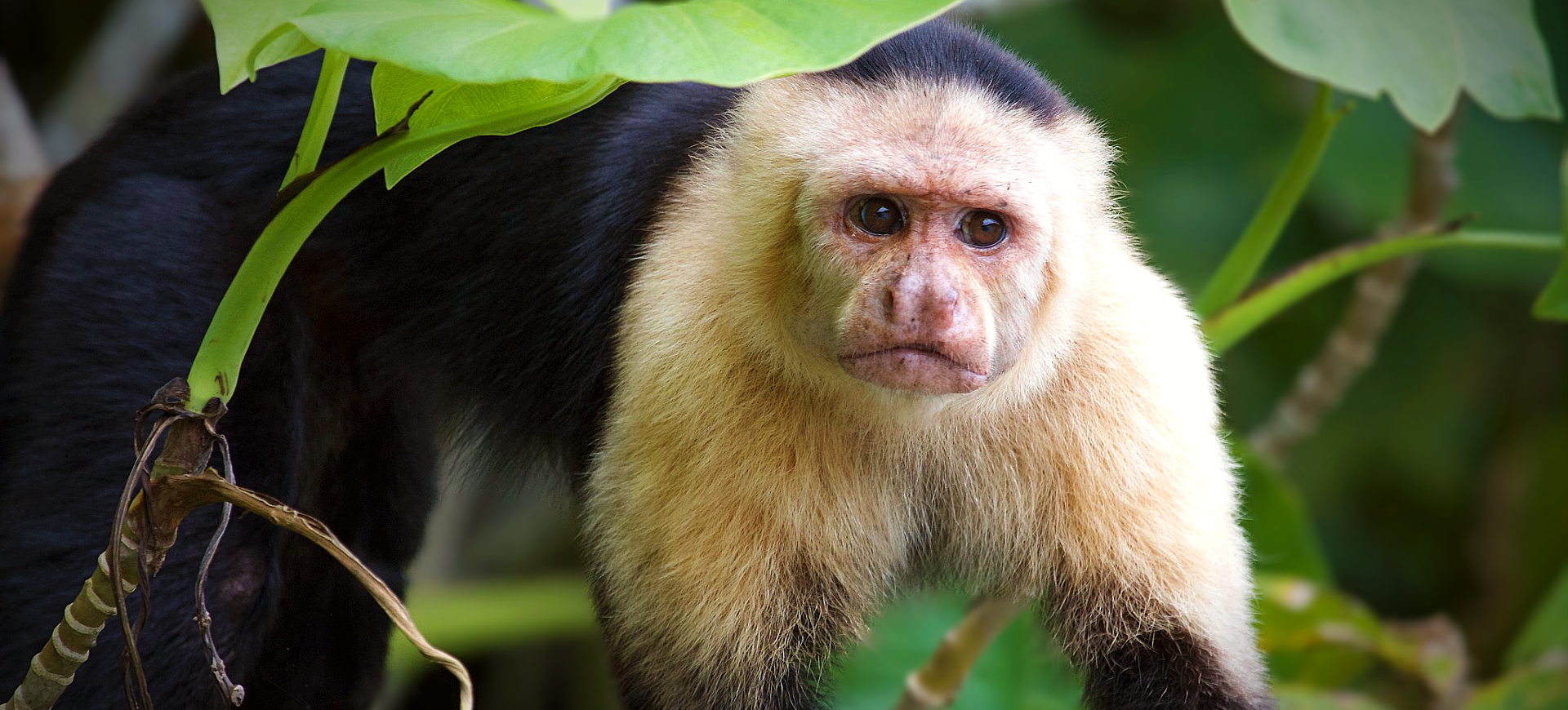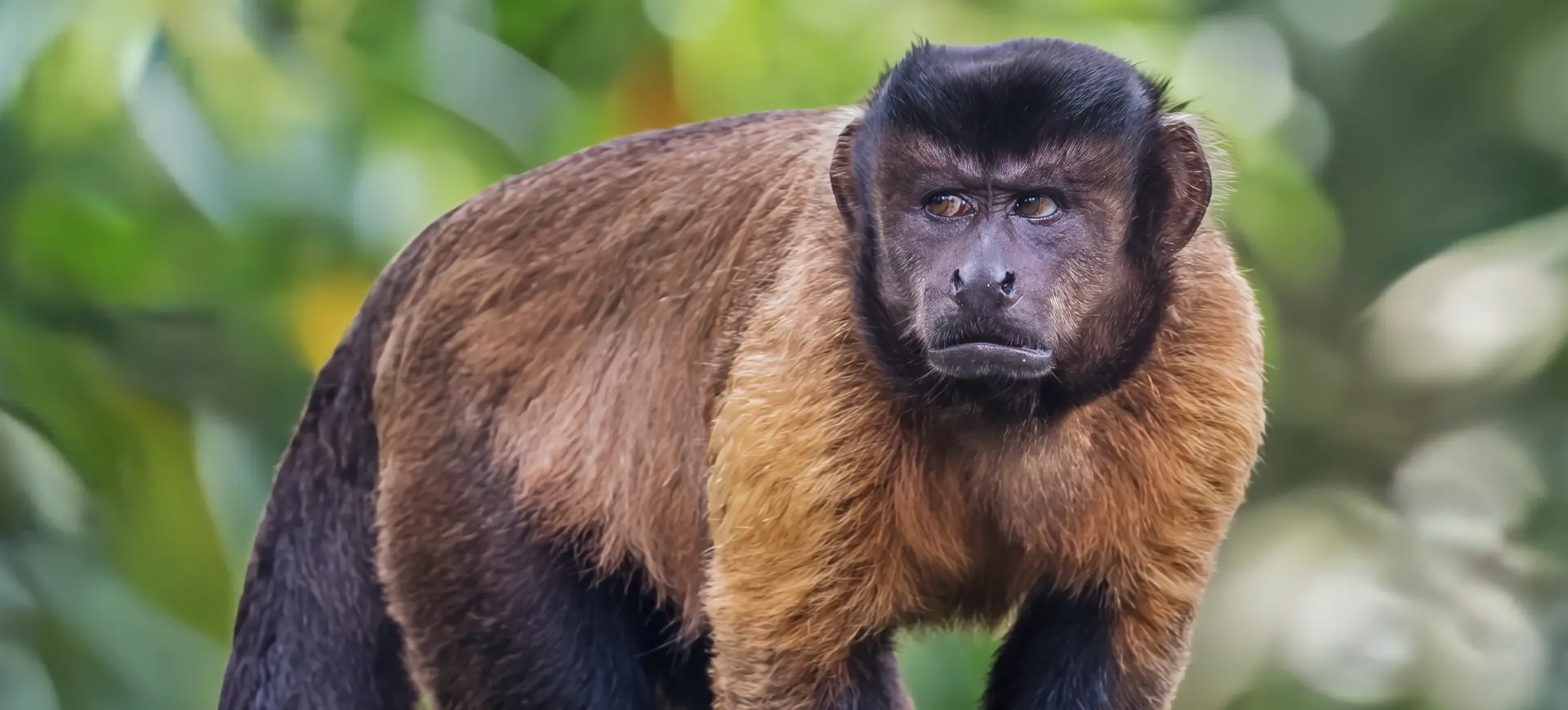Overview
The Guianan Squirrel Monkey, known scientifically as Saimiri sciureus, is a small primate native to the northeastern coastal regions of South America. It is characterized by its bright and lively appearance, distinctive mask-like facial pattern and a richly colored coat. These monkeys are diurnal and arboreal, spending most of their time in the trees of tropical rainforests. Their small size and agility make them excellent climbers and jumpers, an adaptation to their tree-dwelling lifestyle.
Guianan Squirrel Monkeys live in large social groups, often comprising several dozen individuals. These groups are dynamic and have a complex social structure, with a dominance hierarchy that influences feeding and mating behavior. The species is known for its high-pitched calls and chattering, which play a crucial role in social communication and coordination within the group. They are omnivorous, feeding on various fruits, insects, and small vertebrates.
Reproduction in Guianan Squirrel Monkeys is seasonal, typically coinciding with abundant food resources. Females are the primary caregivers of the young, but other group members, including males, may play a role in socializing and protecting the infants. The care and socialization of the young are crucial for their development and integration into the monkey troop.
Current distribution:
Guianan Squirrel Monkeys are widely distributed across the northeastern coastal regions of South America. Their population is concentrated in the Amazon Basin, where suitable habitat conditions are available. Despite facing habitat loss in some areas, they have managed to maintain a relatively stable presence in much of their range. This resilience is partly due to their adaptability to various forest types and their ability to live in secondary forests.
The exact population size of Guianan Squirrel Monkeys in the wild is not well-documented, but they are not currently considered endangered. However, ongoing habitat destruction and fragmentation could pose future threats to their populations. Conservation efforts in their habitat regions are crucial to ensure their continued survival.
Physical Description:
Guianan Squirrel Monkeys are small and slender primates with an average body length of 12 to 14 inches (30 to 35 cm), excluding the tail. They have a distinctive appearance, with bright and expressive faces accented by white fur around the eyes and mouth, contrasting with their darker fur. Their fur is primarily olive or greyish, with a yellowish hue on the arms and legs. The tail is long and bushy, used for balance but not for grasping.
Sexual dimorphism in this species is minimal, though males are slightly larger and heavier than females. Their hands and feet are adapted for a life in the trees, with strong, agile fingers perfect for grasping branches. The young resemble adults in appearance but are smaller and less colorful. The overall appearance of the Guianan Squirrel Monkey is adapted to its arboreal lifestyle and tropical environment.

Lifespan: Wild: ~15 Years || Captivity: ~20 Years

Weight: Male: 1.7-2.4 lbs (0.77-1.1 kg) || Female: 1.5-2.2 lbs (0.68-1 kg)

Length: Male & Female: 12-14 inches (30-35 cm) body length

Top Speed: 22 mph (35 km/h)
Characteristic:
Native Habitat:
The Guianan Squirrel Monkey inhabits the tropical rainforests of northeastern South America, including areas in Guyana, Suriname, French Guiana, and northern Brazil. They are adapted to live in dense, humid forest environments, where they spend most of their time in the mid to upper canopy. Their habitat provides them with abundant food sources and protection from ground-based predators.
These monkeys are also found in mangrove forests and secondary forests near rivers and streams. They depend on the forest ecosystem and are sensitive to environmental changes affecting their habitat, such as deforestation.
Climate Zones:
Biomes:
Biogeographical Realms:
Continents:
Diet:
Diet & Feeding Habits:
Guianan Squirrel Monkeys are omnivorous, with a diet consisting of fruits, nuts, insects, small vertebrates, and occasionally small birds. They prefer fruits, which constitute a significant part of their diet. Their agile movements in the treetops allow them to access various food sources efficiently.
Insects and other small animals are important for providing protein and other nutrients. These monkeys have keen eyesight and quick reflexes, aiding them in catching insects or other small prey. Their foraging behavior is often a group activity, with troop members spreading out to search for food while maintaining vocal contact.
Mating Behavior:
Mating Description:
Guianan Squirrel Monkeys have a polygynous mating system, where dominant males mate with multiple females. Mating season is typically associated with the abundance of food, particularly fruits. During this time, males exhibit increased aggressiveness and competition for female access.
Females give birth to a single offspring after a gestation period of about 150 to 170 days. The mother is the primary caregiver, with the infant clinging to her for several months until it becomes more independent. Young monkeys learn social and survival skills by interacting with other troop members, which is crucial for their development.
Reproduction Season:
Birth Type:
Pregnancy Duration:
Female Name:
Male Name:
Baby Name:
Social Structure Description:
Guianan Squirrel Monkeys live in large, multi-male/multi-female groups, sometimes comprising over 100 individuals. These groups have a complex social structure with a dominance hierarchy, especially among males. Social interactions within the troop include grooming, playing, and vocal communication, which help maintain social bonds and group cohesion.
These monkeys are highly social, and their group living provides several advantages, including increased vigilance against predators and cooperative care of the young. Their social structure also contributes to foraging efficiency, as they can cover larger areas and effectively locate food sources.
Groups:
Conservation Status:
Population Trend:
While the Guianan Squirrel Monkey is not currently endangered, it faces habitat loss and fragmentation threats due to deforestation for agriculture, logging, and urban development. In areas where the forest is intact, they tend to thrive, but their numbers may be declining in regions with significant habitat destruction.
Conservation of their natural habitats is crucial for the continued stability of their populations. Protected areas and sustainable forest management practices are important in conserving these monkeys and the biodiversity of their ecosystems.
Population Threats:
The primary threat to Guianan Squirrel Monkeys is habitat loss from deforestation and land conversion for agriculture and other human activities. This loss of habitat reduces their living space and affects the availability of food resources. Additionally, they sometimes face threats from the illegal pet trade, where they are captured for sale as exotic pets.
Climate change poses a long-term threat by potentially altering their habitat and the ecosystems they depend on. Changes in rainfall patterns and temperature could affect the fruiting cycles of trees, impacting their food sources.
Conservation Efforts:
Conservation efforts for Guianan Squirrel Monkeys include habitat preservation and establishing protected areas where they can live and breed without human interference. Environmental organizations and governments in their range are working to implement sustainable land use practices to reduce deforestation.
Education and awareness campaigns are also crucial in reducing the demand for these monkeys in the illegal pet trade. Efforts to rehabilitate and release confiscated individuals back into the wild are part of conservation strategies. Research and monitoring programs are important to understand their population dynamics and the impact of environmental changes on their species.
Additional Resources:
Fun Facts
- Guianan Squirrel Monkeys have proportionally the largest brain-to-body mass ratio of all the primates.
- They have excellent vision, including color vision, which aids in selecting ripe fruits and detecting predators.
- These monkeys are skilled swimmers, a relatively rare trait among primates.
- Their tails, although not prehensile, are used for balance and signaling.
- Guianan Squirrel Monkeys have a variety of vocalizations used for different purposes, including alarm calls and social communication.
- They are often observed using their hands and mouth to explore and manipulate objects, demonstrating curiosity and intelligence.
- Infants are born with a natal coat that is different in color from adults, which changes as they mature.
- During the mating season, male Guianan Squirrel Monkeys experience a noticeable increase in body weight and size, known as “seasonal fattening.”
- These monkeys play a vital role in their ecosystem as seed dispersers, aiding in the growth and spread of various plant species.
- Guianan Squirrel Monkeys have a unique way of drinking water: dip their hands or tails into the water and lick the liquid off.








